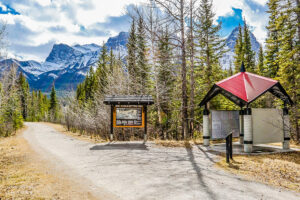
Travel
Trans Canada Trail celebrates 30 years of connecting Canadians
The trail started with a vision to link Canada coast to coast to coast. Now fully connected, it’s charting an ambitious course for the future.
- 1730 words
- 7 minutes
This article is over 5 years old and may contain outdated information.
History

It was Canada’s version of the Titanic. One hundred years ago, the Empress of Ireland sank, resulting in Canada’s worst maritime disaster.
“The real wonder of the Empress disaster is not that so many died, but that anyone was saved,” writes Derek Grout in his new book RMS Empress of Ireland: Pride of the Canadian Pacific’s Atlantic Fleet, published by Dundurn to commemorate the centenary of the sinking.
Grout says the Empress is important not simply because it’s Canada’s largest peacetime naval disaster and more than 1,000 people lost their lives. “The Empress represents a monument to that period of mass immigration into Canada when the country’s population went from 5.5 million to 11 million in a little over a decade. That ship and others just like her made a tremendous contribution to Canada’s economic development.”
On Jan. 26, 1906, the Empress of Ireland slid down oiled skids into Glasgow’s River Clyde. Though not as grand as the ocean liners that made the Britain-to-New York journeys, she was one of the finest ships of Canadian Pacific Rail’s fleet.
Capable of carrying around 1,500 passengers from Quebec to Liverpool in about five days, she made 96 crossings before disaster struck on May 29, 1914. On a night that seemed routine, other than scattered fog banks, the Empress quit the docks in Quebec with 1,477 passengers and crew, making her way up the St. Lawrence River. Soon after, she collided with the Storstad, which ripped a fatal tear into her hull. The Empress sank in 14 minutes.
As part of his book, Grout says he gathered almost 200 pictures, postcards, paintings and promotional materials. He says that the roughly 100 colour illustrations he found are mostly pre-1914 and “make the ship come alive in a way that I never really thought was possible.”
The Empress wreck was designated a national historic site in 2009. Though it’s still open to divers, strict rules are in place to prevent further scavenging from the wreck that became known as an easy place to pick up valuable collectables.
Are you passionate about Canadian geography?
You can support Canadian Geographic in 3 ways:

Travel
The trail started with a vision to link Canada coast to coast to coast. Now fully connected, it’s charting an ambitious course for the future.

Science & Tech
Celebrating Canadian Innovation Week 2023 by spotlighting the people and organizations designing a better future

Wildlife
Canada jays thrive in the cold. The life’s work of one biologist gives us clues as to how they’ll fare in a hotter world.

People & Culture
What does it mean for Canada if we continue to pull up train tracks?